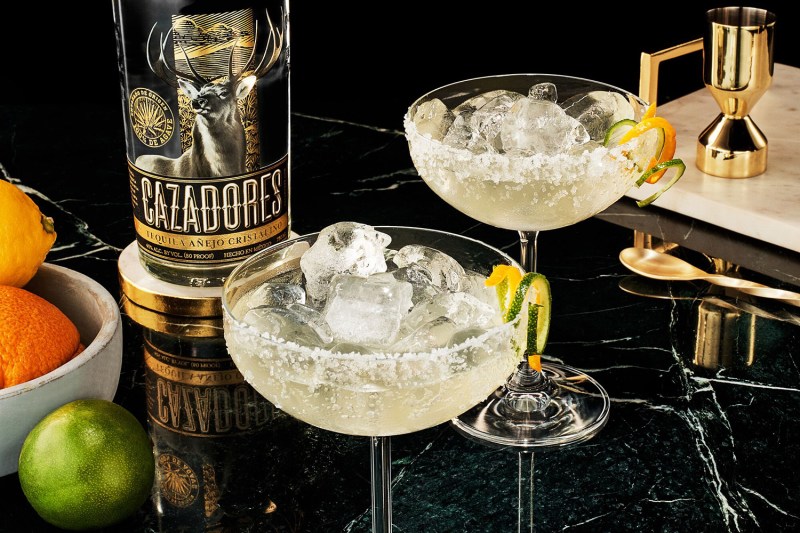Cristalino tequila, while not exactly new, is a style that has been gaining more traction recently. Over the past year, new expressions have been released by 1800, Cazadores, El Mayor, and Cenote, joining the likes of Hornitos, Herradura, and Don Julio, among others. To be clear, cristalino is not an officially recognized category of tequila, it’s more of a trend. The gist of it is that you take aged tequila and charcoal filter out all of the color (and arguably some of the flavor) it has picked up while maturing in a barrel, so you get the character that comes from time spent aging in wood and the clear color of a blanco tequila. At first glance, this seems like a purely aesthetic decision, perhaps done more with bartenders in mind who want to use aged tequila to make drinks but don’t want to affect the way their cocktails look. But different tequila makers seem to have different things in mind when making cristalino. So what exactly is the point?

According to Jesus Susunaga Acosta, master blender for Tequila Cazadores, you don’t want to completely remove the flavors that are picked up while barrel aging. “After spending the time and resources on aging your tequila, you want to ensure to retain its matured attributes,” he said. “We age our Añejo Cristalino tequila in small, virgin oak barrels for over two years, allowing the liquid to have more contact with the wood and give it a more consistently smooth and complex flavor. After filtration, our cristalino maintains the sensory qualities of an añejo tequila, with notes of mellow wood, nuts, apples, and our signature sweet taste.” McKenna Burst, brand manager for Luxco (which owns Tequila El Mayor), says that part of the concept of its cristalino is to “bring back tasting notes of a blanco that are typically lost in the aging process.” This is an interesting take, but can charcoal filtering really revert the flavor of an aged tequila to highlight its pre-barrel identity? And why not just drink blanco tequila then?
Burst says that cristalino tequila has become very popular in Mexico, and is gaining recognition and fans in the U.S. in part because of its novelty. “Visually, you expect the tequila to have the taste of a blanco,” she said, “and then you are pleasantly surprised when you pick up notes of vanilla and oak. This delicious balance of flavors will give bartenders an opportunity to craft new, exciting cocktails.” According to Acosta, the target audience for cristalino might be people who are turned off by the richer notes of an aged tequila. “Cristalinos have less tannins, a unique taste and aroma, and smoother mouthfeel than a typical añejo, all of which may appeal to someone who finds aged tequilas too strong or spicy,” he said. But again, this begs the question — there’s plenty of blanco tequila out there, so why not just drink that? Acosta believes that cristalino differs because it offers the best attributes of both un-aged and aged tequila, which he says makes it an ideal spirit for sipping and mixing.
Bartenders have embraced cristalino, using it to make traditional tequila drinks and come up with new ideas based specifically around the spirit. Craig Schoettler, MGM Resorts Executive Director of Beverage & Corporate Mixologist, said that he likes to use it in a variation of a dirty martini. “It provides a softer, lighter style of tequila with slight vanilla components from the wood,” he said, “but not the cream soda-like characteristics a typical reposado tequila has.”
Of course, there are those who are dubious about the rise of cristalino tequila and question the methods some brands are using to make their product. Kristopher DeSoto, founder and CEO of Hiatus Tequila, recognizes that there’s a market for cristalino, but personally believes that the filtration process removes the flavors that give tequila its defining identity. “I personally find the majority of cristalinos too sweet, generally lacking body, or through the use of additives it has an unnatural body,” he said. “But most importantly, due to the aging and then extra filtering, they lack the robust agave notes that make tequila so unique to other distilled spirits.”
We should not breeze over that comment about additives. This is something that is allowed by law, and does not have to be disclosed on the label as long as it’s less than one percent of the volume. Additives can include some type of sugar syrup, glycerine (for a thicker mouthfeel), oak extract, and caramel coloring. “Additives are a touchy subject in the industry and something we try to educate people on,” said DeSoto. “Some of the biggest brands out there are full of them because they make a crap product that they then need to doctor up to be consumable.” He believes that since some large brands are already using additives in their aged tequila, it follows suit that their cristalino will have have them. “Even if they don’t add anything to their cristalino,” he said, “there was probably something added already, and ironically they then tried to filter some of that back out.”
Of course, this doesn’t mean every major tequila brand is using additives, and it’s really up to the consumer whether or not he or she cares about this. The same could be said about the addition of sugar to rum or caramel coloring in scotch whisky, although it seems like the additives in tequila have a more profound impact on the flavor and quality of the spirit than these other examples. More transparency would be a welcome addition to the world of tequila, and there are brands out there that don’t adulterate their product, for those who are interested. It remains to be seen how popular cristalino will become, and whether it will ever be officially recognized as a category. In the meantime, there are plenty of bottles out there for you to taste if you are curious.



